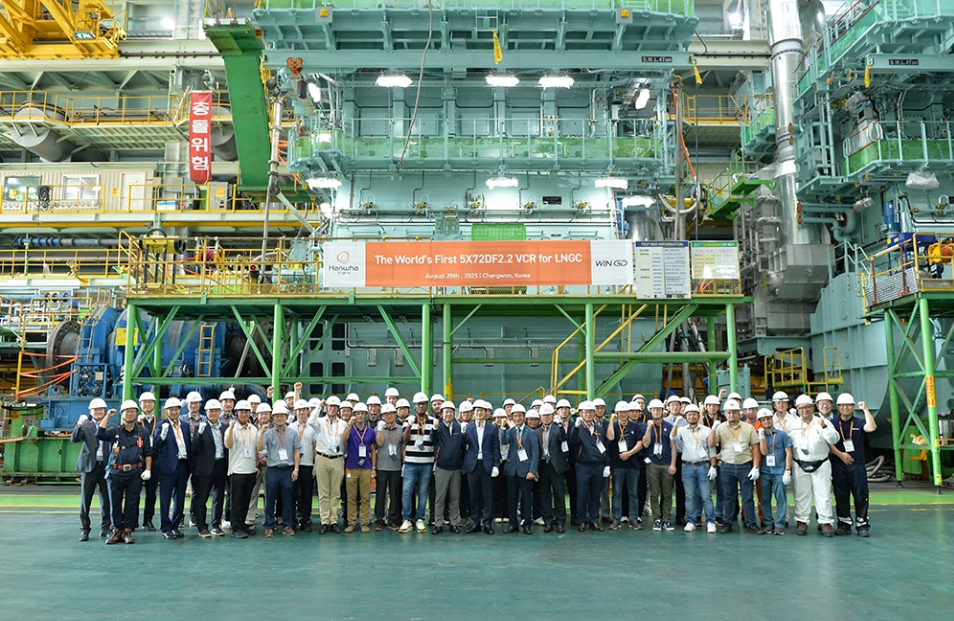Hanwha Engine, a marine engine manufacturer led by CEO Moon Ghee Ryu, has successfully produced the world’s first next-generation eco-friendly dual-fuel X-DF engine equipped with variable compression ratio (VCR) technology for LNG carriers, capable of using both LNG and diesel fuel and engineered with WinGD’s low-emissions engine technology. This development is set to accelerate the decarbonization transition in the shipbuilding industry.

Hanwha Engine held a joint ceremony together with engine designer WinGD on August 29 at its headquarters in Changwon, South Korea, to commemorate the world’s first VCR-applied X-DF engine for LNG carriers and to officially announce the first shipment of the 5X72DF-2.2 engine with VCR technology. The newest version of WinGD’s X-DF dual-fuel technology, adapted for LNG carriers, builds on over a decade of proven, reliable operations.
VCR represents a next-generation, green innovation that optimizes fuel efficiency and reduces carbon dioxide emissions by adjusting the engine compression ratio in real time according to operating conditions. Notably, it has the potential to reduce methane slip (methane emissions from incomplete combustion of LNG) by 30% to 50% compared to existing systems, drawing strong interest from the global shipping industry, where cutting greenhouse gas emissions is a top priority.
Hanwha Engine has already secured orders for 70 units of the VCR-applied engine, worth $500 million, demonstrating strong demand for next-generation technology. This achievement further solidifies Hanwha Engine’s leading position in low emissions engine technology, following its world-first commercialization of dual-fuel engines in 2013.
“The world’s first production of VCR-applied engines for LNG carriers is not merely a technical achievement but a milestone accelerating the shipbuilding industry’s transition toward environmental sustainability,” remarked Ryu. “Moving forward, Hanwha Engine will continue to lead the industry by leveraging clean energy technologies to shape the future and make tangible contributions to marine environmental protection.”


